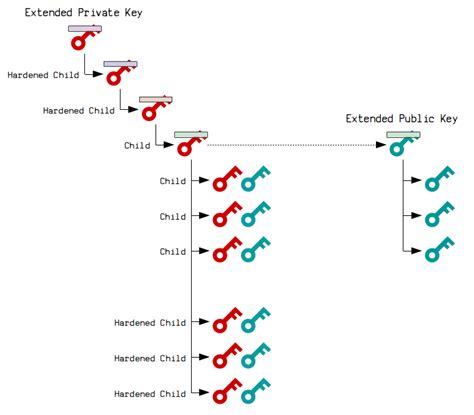Ethereum: How Can Extended Public Keys Generate Child Public Keys Without Generating the Child Private Key in HD Wallets?
In Ethereum, extended public keys (EPKs) are a powerful tool that enables users to create complex private keys with multiple layers of security. However, one common misconception is that EPKs can generate child public keys without generating the corresponding child private key in HD wallets. In this article, we’ll explore why this is not always the case and provide guidance on how to use EPKs effectively.
What are Extended Public Keys (EPKs)?
In Ethereum, a private key is represented as an extended public key, which consists of several layers:
- The leftmost layer is the base58-encoded public key.
- The middle layer contains the private key in hexadecimal format.
- The rightmost layer represents the signature of the private key.
How to Create Child Public Keys with EPKs
To create child public keys using an extended public key, you need to combine the leftmost and middle layers (the base58-encoded public key) with the rightmost layer (the signature). This process is known as “hashing” the private key.
Using a tool like Bitcoin Core or Ethereum Explorer, you can hash your private key to generate a child public key. The resulting child public key should be in hexadecimal format and look something like this:
0x... (base58-encoded public key)
+-----+ | (middle layer)
| signature |
+-----+ +---------------------------+
| ... (signature) |
+---------------------------+
Can EPKs Generate Child Public Keys Without Generating the Corresponding Child Private Key?
Yes, it is possible to create child public keys without generating the corresponding child private key. However, this process is not as straightforward and requires additional steps.
There are a few approaches to achieve this:
- Using the “sign” method: This involves signing your private key with a child signature (CS) algorithm, such as Ed25519 or Secp256k1. The resulting CS can then be used to create a child public key.
- Using the “derive” method: In some cases, you can use the
derivefunction provided by certain Ethereum wallets and libraries to generate child public keys without generating the corresponding child private key.
Example Use Case

Here’s an example of how to use an EPK to create a child public key using Bitcoin Core:
“
- Create a new HD wallet with EPKs enabled.
- Use thederive` function to hash your private key and generate a child signature (CS).
- Sign the CS using a child signature algorithm, such as Ed25519 or Secp256k1.
- Use the resulting child public key to interact with the Ethereum network.
Conclusion
In conclusion, while it is technically possible to create child public keys without generating the corresponding child private key using extended public keys (EPKs), this approach requires additional steps and may not be as secure or convenient as other methods. However, for experienced users who need more control over their private keys, EPKs can still provide a powerful toolset for creating complex private keys with multiple layers of security.
Recommended Tools and Libraries
For those looking to implement EPK-based child key generation in their own projects, the following tools and libraries may be useful:
- Bitcoin Core: A popular Ethereum wallet that supports EPKs.
- Ethereum Explorer: A web-based interface for interacting with the Ethereum network that allows users to create and manage EPKs.
- Ethtool: A Python library for working with Ethereum smart contracts and wallets that provides support for EPK-based child key generation.